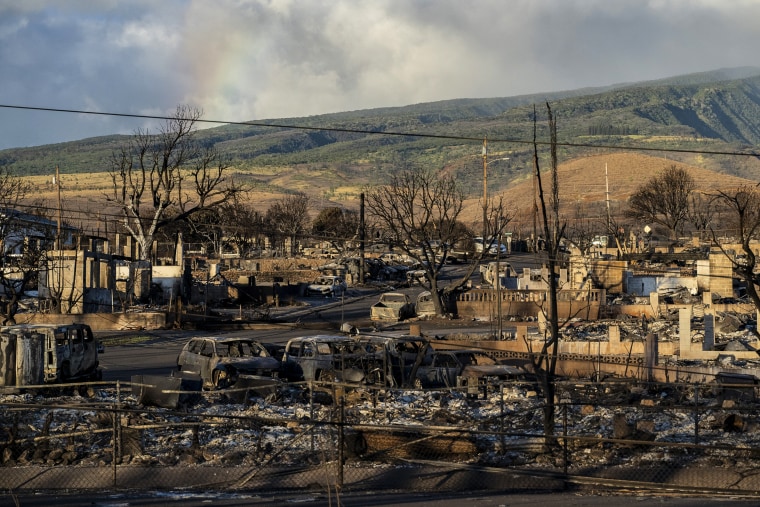As Maui reckons with one of the deadliest wildfires in recent U.S. history, it is also dealing with a digital nightmare that has become common around major news stories: social media-fueled conspiracy theories.
Fires have ravaged and destroyed parts of West Maui, hitting the historic community of Lahania particularly hard. At least 99 people are dead and the economic cost of the fires could balloon to $7 billion.
It’s still unclear what caused the fires, but the severity of the destruction in West Maui has been attributed in part to a confluence of high winds from Hurricane Dora in the Pacific and drought in the region. Wildfires have been a known risk in the area for years.
That hasn’t stopped would-be social media sleuths from attempting to uncover a nonexistent plot to start the fires.
One of the most prevalent and outlandish theories is that the fires were caused by some kind of secret “energy weapon,” a relatively common conspiracy trope that has been repurposed in recent years around a variety of events, including previous wildfires. Some have misrepresented an image of a SpaceX rocket launch as evidence that some kind of weapon used a beam to cause an explosion on the island.
Those baseless theories rely on images of a SpaceX launch that took place in May 2018 in California.
Read more NBC News Maui wildfire coverage:
The Associated Press reported that these images are being shared on platforms like Facebook and Instagram, and, in one instance, a man on Instagram shared the image claiming it “shows a laser beam coming out of the sky directly targeting the city.” He then falsely claims the Maui wildfires are linked to a long-running conspiracy theory about a weaponized government weather modification program, The AP reported.
The conspiracies aren’t limited to Meta platforms and have also popped up on apps like X, the platform formerly known as Twitter, and TikTok.
Meta, X and TikTok did not immediately respond to requests for comment.
TikTok says it “prohibit[s] content that could mislead our community about civic processes, public health, or safety.” Meta says it removes “misinformation where it is likely to directly contribute to the risk of imminent physical harm. We also remove content that is likely to directly contribute to interference with the functioning of political processes and certain highly deceptive manipulated media.”
An August 2022 policy from X said it “will take action on accounts that use X’s services to share false or misleading information that could bring harm to crisis-affected populations.” It was unclear if that policy was still in place.
Another conspiracy about an energy weapon, this one predominantly spreading on X, showed an image that some incorrectly claimed was Maui. In reality, the image shows a flare set off during a controlled burn in Canton, Ohio — also in 2018.
Both the fact-checking website Snopes and The AP have debunked the images as being from SpaceX and the controlled burn in Ohio.
Social media conspiracies around the Maui fires are hardly the first time internet sleuths have seized on a disaster to spread false claims.
After smog from a Canadian wildfire covered the Northeast this summer, false conspiracies about the fires’ origin percolated online. Far-right conspiracy theorists seized on the same theory in connection with Maui’s fire, falsely claiming the U.S. government had used a targeted “energy weapon” to start the burn in Canada.
When a train derailed on Feb. 3 in East Palestine, Ohio, containing the highly flammable and toxic chemical vinyl chloride, conspiracies took over social media about acid rain spreading to the East Coast. That theory was debunked by officials in several states, including New York, who said that there had been no uptick in rain acidity following the derailment. Experts also added that hydrochloric acid, which is the byproduct of vinyl chloride when it is burned, does not typically get picked up by air currents or create acid rain.
Other major newsworthy events, like the pandemic and mass shootings, have also been plagued by social media conspiracies.

